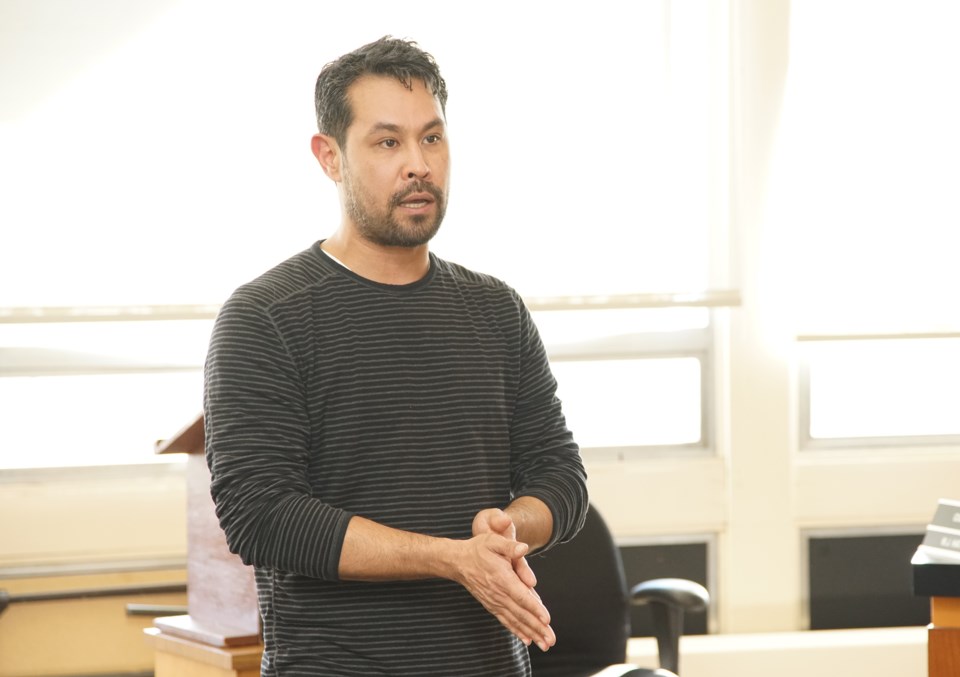City of Powell River councillors received an update on tourism on the Sunshine Coast.
At the March 17 committee of the whole meeting, executive director of Sunshine Coast Tourism Paul Kamon outlined how the industry has progressed in the region in 2019.
Kamon said he is asked wherever he goes how tourism is doing on the Sunshine Coast. He presented figures to indicate tourism growth in the region.
Sunshine Coast Tourism’s main website portal is sunshinecoastcanada.com, which is the organization’s primary call to action. He said it’s a state-of-the-art website that has seen exponential growth.
In 2019, the organization achieved 1.3 million pageviews, which was a 21 per cent increase over the previous year. He said they were seeing 381,000 users of the site over the year, which is “phenomenal.”
One of the most important features on the website is a dynamic booking referral engine, which means the site can connect people directly to businesses. Last year, there were 190,000 referrals.
“That is the most important thing that we do is to connect visitors to our businesses,” said Kamon. “We act as a funnel because we have that ability.”
Kamon said that social media is also a big part of the strategy. Sunshine Coast Tourism has three main channels: Instagram, Facebook and Twitter. There is an audience of roughly 36,000 through the social channels. Sunshine Coast Tourism promotes the hashtag #sunshinecoastbc, which had nearly 165,000 uses in 2019.
Media articles and hosting is another big part of the organization’s function.
“We bring international journalists and influencers from around the world to the Sunshine Coast,” said Kamon.
Sunshine Coast Tourism tracks the stories that are written about the Sunshine Coast and there was a massive uptake in 2019, with a growth of 187 per cent, said Kamon.
“In the larger media, the Sunshine Coast was a very hot destination,” said Kamon. “We are seeing that translate into higher traffic. Last year we had articles in the Globe and Mail, the Vancouver Sun, BC Living, as well as a TV show on Fox Sports, featuring the Sunshine Coast Trail.”
In terms of BC Ferries, there was growth on the Powell River routes to Comox and Texada Island. Langdale, the main portal, had 1.3 million passengers. Kamon said he has analyzed the ferry system statistics over the last five years and there has been essentially a five to six per cent growth year-over-year.
There are three visitor centres that are part of Destination BC’s network. The ones in Gibsons and Sechelt are under contract with Sunshine Coast Tourism, and there is Powell River’s. Kamon said the visitation is pretty steady, at around 10,000 at the local visitor centre. Between the three of them they served more than 34,000 visitors in 2019.
In terms of room revenue from the Sunshine Coast, in 2019, more than $20 million was achieved for the first time. Short-term rentals added another $8 million to the overall room revenue on the Sunshine Coast.
“That’s on average a five per cent growth year-over-year for the last 10 years,” said Kamon.
Kamon said with regard to COVID-19, a strategic, coordinated approach was being taken. He said there would be closure of visitor centres, but that staff were operating digitally and engaging visitors through social channels. As far as travel promotion was concerned, it has essentially stopped, he said. Sunshine Coast Tourism is creating awareness of destinations, and not necessarily inspirational content to try to bring people here.
Councillor George Doubt said he thinks Sunshine Coast Tourism is doing a great job and when he looks at the marketing materials, this looks like an attractive place to come.
“You are doing an effective and valuable job for tourism,” he said.
He added that he wanted to talk about Sunshine Coast Tourism and Tourism Powell River. Doubt said on the lower coast, Sunshine Coast Tourism was operating visitor centres and in Powell River, it is operated independently, getting its own funding from the qathet Regional District and the city. He wondered how it was going in terms of working out an agreement.
Kamon said it is an ongoing discussion.
“There’s still a lot of things to work out,” he said. “Ultimately, from my understanding, the organizations are supposed to merge so we can be more optimized and save government money, so we are not running separate entities. We are still trying to figure out how we can operate without stepping on each other’s toes. That’s proving to be elusive at this point.”



